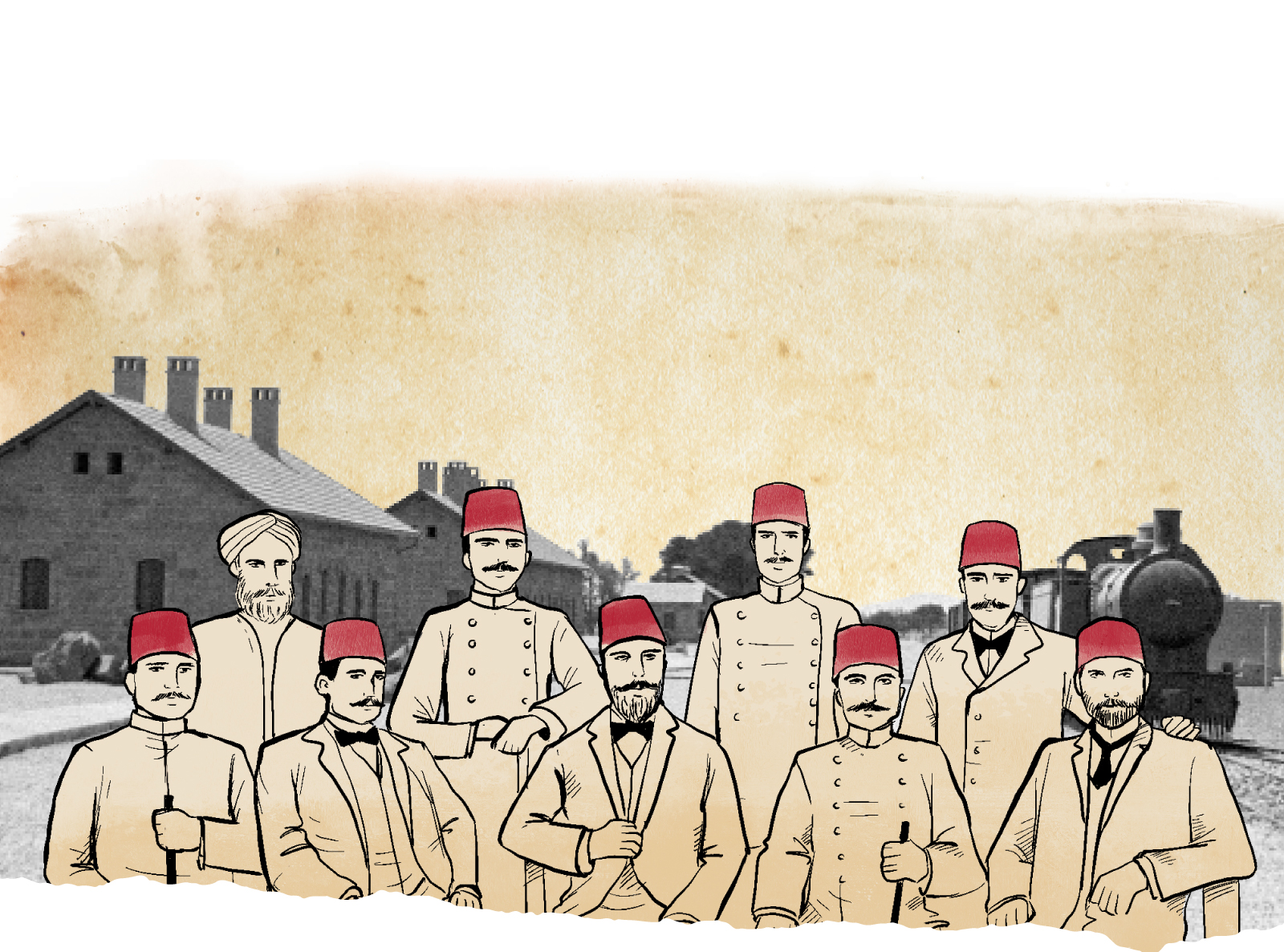
They incited the political forces against King Abdulaziz
The Committee of Union and Progress sought to implement the policy of the Ottoman Sultans, which is to insist on occupying the Arabian Peninsula
If one traces the years prior to the outbreak of World War I (1914), and the entry of the Ottomans into it, one should realize that they were such difficult years for the Ottoman Empire, especially with the men of union and progress taking power, and their last attempt to gather what was left from the colonized states, which began to perish, and in the midst of a series of external defeats and internal turmoil, which heralded the imminent fall of the state. The Arabian Peninsula has always been considered an important point in the policies of the men of union and progress, hence, aspiring to maintain the Ottoman presence in the Arabian Gulf; therefore, confirming their hegemony, and their occupation of Hejaz to gain the religious propaganda that they derive from their occupation of the Two Holy Mosques, hence, conferring a false Islamic legitimacy on them. This is, in addition to, protecting Hejaz Railway that was established to impose their control and to ease their access of military supplies to confirm their military presence not only in Hijaz, but also in the whole Persian Gulf and Yemen.
The men of union and progress took advantage of the dispute between the nobles, at the time, Sharif Ali Haidar and Sharif Hussein bin Ali, over the Emirate of Mecca. Sources indicate that the men of union and progress, initially, allied with Sharif Ali Haider, and were angry with Sharif Hussein due to his strong previous relationship with the Red Sultan Abdul Hamid II.
But the matter changed when the men of union and progress agreed to give the emirate to Sharif Hussein bin Ali after forcing him to follow their policy, which aims to confront the local forces in the Arabian Peninsula, especially in Aseer and Yemen, and in particular King Abdulaziz Al Saud. And the federalists focused their efforts on making Hejaz a focal area for them, in addition to Istanbul’s need for the Emir of Mecca to succeed in extending the Hejaz railway, and to protect the line from Bedouin attacks. This line had reached Madinah in the year 1908, and there was an Ottoman desire to extend this line to reach holy Mecca.
Accordingly, the Unionists, in the Ottoman government, issued their decision to appoint Hussein bin Ali as Emir of Mecca in 1908, and it did not take long until the intentions of the Unionists towards King Abdulaziz became clear. In 1910, the men of Union and Progress ordered the Emir of Mecca to move to confront the local forces in region, hence, a campaign went against the Idrisid family in Aseer. But, the biggest confrontation was against King Abdulaziz.
Ameen Rihani states that the campaign of the Emir of Mecca on Al Qassim and Najd was in fact a “service to the unionists.” Abdullah bin Al Hussein says, in his memoirs, published in Jerusalem in 1946 that the Grand Vizier Hakki Pasha wrote to him in the year 1910 and asked him to inform his father Hussein to help them against King Abdulaziz Al Saud. The unionists continued to impose pressure upon the Emir of Mecca to incite forces against King Abdulaziz. Maneuvers continued between the Unionists and the Emir of Mecca, on the one hand, and the founding king, on the other. According to the Egyptian historian Mr. Rajab Haraz, this continued throughout the period from 1910 to 1913.
The men of union and progress Committee used their Ottoman Wali of Mecca to stop the victories of the founder King Abdulaziz.

Finally, The Ottoman governor of Mecca, Hussein bin Ali, realized the bad intention of the federalists towards the entire region, especially after they followed the policy of administrative centralization, and abolished some of the privileges of his emirate. As a result, the Emir of Mecca moved away from the Federalists and their policy, and his attitude towards them changed, especially during the First World War. That paved the way for him later, when the decision was made to start revolting against the Ottomans from his state, and in the light of which he took advantage of the resentful feelings of the Arabs against the Ottoman occupation by employing them in his revolution, which aimed to establish a kingdom of his own.


- Ameen Rihani, The History of Najd and Its Appendices, 4th Edition (Beirut: Dar Al-Rihani, 1970).
- Hafez Wahba, The Arabian Peninsula in the Twentieth Century (d.d.: Committee for Composing and Translating, 1935).
- Khair Al-Din Al-Zarkali, The Peninsula in the era of King Abdulaziz, 3rd Edition (Beirut: Dar Al-Ilm for Millions, 1985).
- Rajab Haraz, The Ottoman Empire and the Arabian Peninsula (1840-1909) (Cairo: d.n., d.t.).
- Abdullah Uthaymin, History of the Kingdom of Saudi Arabia, 12th Edition (Riyadh: Al-Obaikan Library, 2003).

